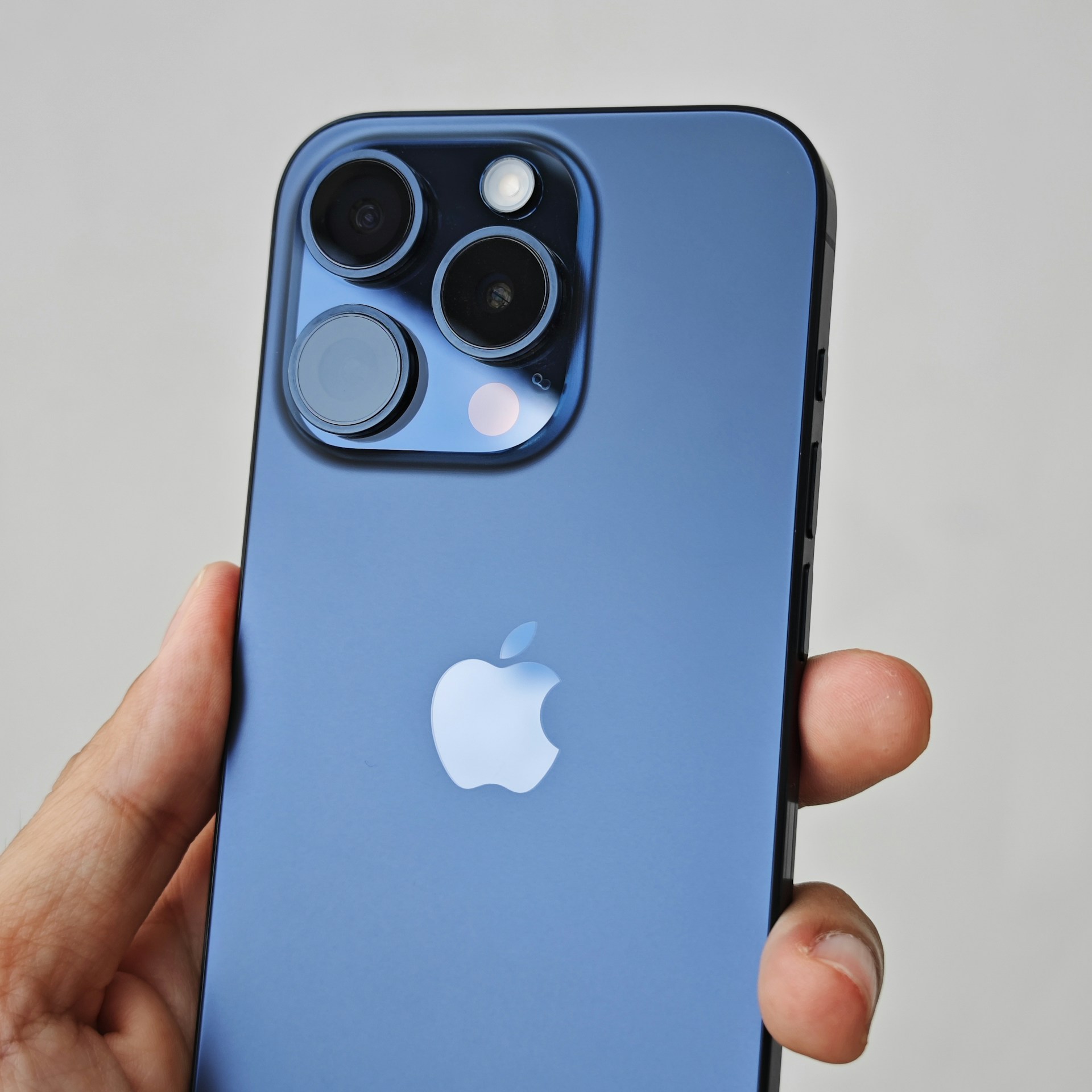Knowing the age of your smartphone is key for several reasons. It helps determine the device’s resale value, as newer phones tend to sell for more. It’s also important for maintenance; older phones might need more repairs and may not support the latest software updates, impacting their functionality and security.
Understanding your phone’s age can guide you in deciding when to upgrade, ensuring you’re not using a device that’s outdated or soon to be unsupported. This knowledge is crucial for optimizing your phone’s use and planning for future tech needs. in this article, you will know 100% Working 20 Methods to Know How Old is Your Smartphone.
20 Methods to Know How Old Your Smartphone

1. IMEI Check
The International Mobile Equipment Identity (IMEI) number is a unique identifier for every mobile device, making it a crucial piece of information for a variety of purposes, including security and tracking.
To find your smartphone’s IMEI, you can dial *#06#, and the number typically appears on your screen instantly. This method is universally applicable, regardless of the phone’s brand or model.
Once you have the IMEI, numerous online tools and websites allow you to enter this number to retrieve detailed information about your device. These tools can often provide specifics such as the model, brand, manufacture date, and sometimes even the network it was originally sold.
The accuracy of the information might vary across different platforms, so it’s recommended to use reputable sources or the official website of the phone’s manufacturer.
It’s important to note that while the IMEI can give you valuable data, the exact details available might differ based on the database the online tool is using.
Some databases are more comprehensive than others, offering detailed logs of the device’s history, while others might only provide basic model identification.
2. Settings Menu
The settings menu is often the go-to place for finding detailed information about your smartphone. Navigating to the “About Phone” section in the settings can reveal a wealth of data, including the device’s model number, serial number, software version, and sometimes the manufacture date or the date it was first activated.
This method is particularly straightforward because it doesn’t require any external tools or websites. Everything you need is within the phone’s built-in software.
However, the type and amount of information can vary significantly depending on the manufacturer and the phone’s operating system. Some brands provide comprehensive details, including the exact date of manufacture, while others might offer more limited information.
In some cases, the phone might display the date of the last major software update, which can also give clues about the phone’s age, especially if it correlates with the release dates of software versions for that model.
3. Visit Manufacturer’s Website
Visiting the official website of your smartphone’s manufacturer and entering details like your phone’s model number or serial number can often give you the most accurate and detailed information about your device.
Many manufacturers have dedicated sections or support pages where you can input your phone’s unique identifiers and access its service history, warranty status, manufacture date, and other relevant details.
This method is particularly useful for ensuring the accuracy of the information since it comes directly from the official source. The manufacturer’s database is likely to have the most comprehensive and up-to-date records regarding your device.
However, the kind of information made available to the public can vary from one manufacturer to another. Some might provide extensive details about the device’s history, while others may limit the information to warranty status and basic specifications.
Accessing this information typically requires you to have an account with the manufacturer or at least the device’s serial number or IMEI. It’s a reliable way to not only find out the age of your phone but also to check other important details like warranty coverage and software updates.
Each of these methods provides a unique avenue to ascertain the age of your smartphone, leveraging the built-in features or the data available through the manufacturer. By understanding where to look and how to interpret the information provided, you can get a clear picture of your device’s background and history.
4. Check the Original Box
The original box of your smartphone is a treasure trove of information. Manufacturers often print important details on the box, including the model number, serial number, and sometimes the manufacturing date itself. This data can give you the precise age of your phone, down to the month and year it was produced.
The packaging may also include barcodes or QR codes that, when scanned, can provide detailed information about the device, including its production date. Keeping the box safe is not just good for resale value; it’s also useful for moments when you need to ascertain the age of your device.
If the manufacturing date isn’t explicitly mentioned, the model number or batch code can often be used on the manufacturer’s website or customer service portal to determine the production timeline.
5. Inspect the Receipt or Invoice
The purchase receipt or invoice for your smartphone is an unequivocal record of its age. This document typically shows the date of purchase, which, although not the exact manufacturing date, gives you a close approximation of the phone’s age.
Retailers and carriers record the sale date and often include the device’s serial number, which can be particularly helpful if you need to claim a warranty or service.
The invoice may also detail the phone’s IMEI number, which is a gateway to a wealth of information about the device.
In cases where the phone was a gift or handed down, the original buyer might have these documents saved, and accessing them can provide clarity on the phone’s purchase history and consequently its age.
6. Look for the Serial Number
The serial number is a unique identifier for your smartphone, distinct from the IMEI number, which is more related to network identification. This serial number is a powerful piece of information that can be used to track the manufacturing details of the device.
By visiting the manufacturer’s website and entering the serial number, you can often access detailed information about the phone, including its production date and sometimes even the location where it was manufactured. For privacy and security reasons, manufacturers don’t publicly disclose what each segment of the serial number means, but their customer service can use it to provide information regarding the device’s warranty status, production date, and other relevant details.
In some cases, third-party websites also offer tools where you can input the serial number to fetch the manufacturing date and other details, though the reliability of this information can vary.
Each of these methods offers a pathway to ascertain the age of your smartphone, leveraging different pieces of information that come with the device.
By combining these methods, you can get a comprehensive understanding of your phone’s background, ensuring you’re well-informed about its lifecycle and history.
7. Use an App
Numerous applications are available that can delve into your smartphone’s system information, providing a wealth of data about your device. These apps can access the device’s firmware, hardware specifications, and system data to compile a detailed profile of your smartphone.
They often display information such as the chipset, memory size, camera specifications, battery health, and more, which can indirectly hint at the phone’s age.
Some specialized apps go a step further by estimating the manufacturing date based on the firmware version or by accessing a database that correlates serial numbers or IMEI numbers with production dates.
The accuracy of these estimations can vary, but they generally provide a good indication of the phone’s age. It’s important to choose a reputable app, as it will require access to your device’s system information. User reviews, app ratings, and developer reputation can be good indicators of an app’s reliability and trustworthiness.
8. Carrier or Retailer
If you purchased your smartphone from a carrier or a retail store, they might have records of your transaction, which can provide exact details about the phone’s age.
Carriers and retailers often keep a detailed log of their inventory and sales, which includes information like the sale date, the device’s IMEI or serial number, and sometimes even the manufacturing batch.
Contacting them and providing proof of purchase or your device’s IMEI/serial number can allow them to retrieve this information.
This method can be particularly useful if you’ve lost the original purchase receipt or if the phone was bought used and you want to verify the original purchase date.
Remember, the effectiveness of this method can depend on the retailer or carrier’s record-keeping policies and your ability to provide sufficient proof of ownership.
9. Warranty Card
The warranty card or booklet that comes with your smartphone is an often overlooked source of valuable information. It usually mentions the warranty period’s start and end dates, which can give you a close approximation of the phone’s manufacture date.
Since the warranty typically starts when the phone is purchased, this can also help you figure out when the phone first entered use.
In some cases, the warranty card might explicitly mention the manufacturing date or batch, which can give you an exact idea of the phone’s age.
However, this varies by manufacturer and region. It’s also worth noting that if the phone was purchased used or refurbished, the warranty card might not reflect the actual age of the device but rather the warranty period from the refurbishment date or from when it was resold.
10. Online Databases
Online databases such as SNDeepInfo provide a platform where you can enter your phone’s serial number or IMEI to access detailed information about your device. These databases compile data from various sources, offering insights into the device’s specifications, production date, and sometimes the sales history.
When you input the IMEI or serial number, the service cross-references it with its database to reveal information like the manufacturing date, model, brand, and even the network it was originally sold on.
Such tools are particularly useful for verifying the authenticity of a device before purchasing it second-hand, or for retrieving details lost over time.
They can also offer additional information like whether the phone has been reported lost or stolen, its warranty status, and country of origin. However, the accuracy and detail of the information can vary, and it’s essential to use reputable sources to ensure the data’s reliability.
11. Check the Battery Compartment
Manufacturers often print important details on a label inside the compartment, including the manufacture date, model number, and serial number. If the phone has a removable battery, you might also find the manufacturing date printed on the battery itself. This date can give you a precise idea of when the phone or the battery was produced.
This method is straightforward but is becoming less common with the rise of smartphones with non-removable batteries. However, for those with older models or phones designed with removable batteries, it’s a quick and reliable way to check the phone’s age. Just ensure the phone is powered off and disconnected from any power source before removing the battery to check for details.
12. Dial Codes
Many smartphones have hidden menus that can be accessed through specific dial codes, also known as USSD (Unstructured Supplementary Service Data) codes. These codes can vary significantly between manufacturers and even among different models from the same brand.
Some of these codes can provide detailed information about the device, including the manufacturing date, hardware details, and software version.
dialing codes like *#0000# or *#manufacturingcode# might display a service menu that includes the manufacture date. However, it’s crucial to use these codes cautiously, as some can trigger changes to the phone’s settings or its operational state.
Always ensure that the code you’re using is intended for your specific phone model and brand, and if in doubt, consult the manufacturer’s website or customer support to avoid any unintended consequences.
13. Software Updates
The software update history or the operating system version your phone initially shipped with can provide significant clues about its age. Manufacturers often release software updates to enhance functionality, fix bugs, or patch security vulnerabilities.
By checking the system updates section in your phone’s settings, you can see the dates of past updates. The earliest update listed can give you an indication of the phone’s age, especially if the phone still runs on the software it originally came with.
knowing the OS version it shipped with and comparing this information with the release dates of those OS versions can offer insight into the manufacturing period.
For instance, if a phone is running Android 10 out of the box, and Android 10 was released in September 2019, the phone likely entered the market around or after this time. this method provides an approximate age since the software can be installed or updated after manufacturing.
14. Third-party websites
Third-party websites, especially those focusing on technology and smartphones, can be invaluable in determining the age of your device. Tech blogs, review sites, and forums often have archives or discussions about various phone models, including their release dates, specifications, and changes through different production batches.
By searching your phone’s model number or name, you can find articles, reviews, or forum posts that reference its release date or any specific details related to its manufacturing timeline.
These platforms can also provide insights into the lifecycle of the phone model, such as when it was announced when it hit the market, and any significant updates it received.
This information, while not directly indicating the exact age of your specific device, helps you place its model within a historical context, giving a rough estimate of its age.
15. Product Code
Many smartphones include a specific product code or model number that uniquely identifies them. This code is often found in the phone’s settings, on the original box, or even on the device itself, usually in the battery compartment for phones with removable batteries.
When you search for this product code online, you can often find detailed information, including the release date of the model, specifications, and sometimes even the manufacturing batches.
16. Service Centers
Visiting the service center of your phone’s brand can be one of the most reliable ways to determine the exact age of your device. The technicians at these centers have access to the brand’s internal tools and databases, which can provide detailed information about your smartphone, including the manufacturing date.
By providing your phone’s IMEI or serial number, the staff can look up the exact production details and history of your device. This method is particularly useful if other methods have been inconclusive or if you need official documentation regarding your phone’s age for warranty or resale purposes.
17. Physical Inspection
Some smartphones may have manufacturing codes or date stamps on their hardware, although this is less common with modern devices due to sleeker designs and integrated components. If your phone has a removable back cover or battery, you might find production-related information inside, such as a sticker or imprint indicating the manufacturing date.
This approach requires a careful examination, and it’s important to proceed with caution to avoid damaging your device. Remember, this method is more likely to bear fruit with older models or devices specifically designed to offer user access to internal components.
18. Google the Model
A simple yet effective way to estimate your smartphone’s age is to Google the model name or number. This search can lead you to a wealth of information, including the official release date, detailed specifications, and the historical context of the device’s launch.
Review sites, official announcements, and tech news articles can all provide clues about the timeline of the phone’s release to the market. While this method won’t give you the exact manufacturing date of your specific unit, it provides a close approximation of when your phone model first became available.
19. Resale Platforms
Online marketplaces and resale platforms can be unexpectedly informative when it comes to determining the age of a smartphone model. Sellers often list the release year or the age of the devices they’re selling, and you can find similar models to yours with detailed descriptions that might include the purchase date or the manufacturing period.
This information, while not directly about your device, can give you a ballpark figure of when phones like yours were typically sold or manufactured.
20. Community Forums
Tech community forums are invaluable resources for gathering nuanced information about your smartphone. Enthusiasts, experts, and fellow users often share insights, experiences, and historical data about various models. By posting your phone’s model number or other relevant details, you can solicit information about its age.
Members might guide you to resources, share similar experiences, or provide tips on finding manufacturing details. Additionally, archived posts or discussions can reveal the release timelines and production batches of countless smartphone models.
Conclusion
By utilizing these methods, you can gather substantial information about your smartphone’s age, whether through direct data retrieval, historical purchase records, or warranty-related documentation. Each method provides a different piece of the puzzle, helping you construct a comprehensive picture of your device’s history.
FAQs
The IMEI (International Mobile Equipment Identity) number is a unique identifier for your smartphone. When you input this number into certain online tools or databases, it can provide details about your device, including the manufacturing date. These tools cross-reference the IMEI with manufacturer data to reveal specifics about the phone’s production timeline.
Dial codes, or USSD codes, can access hidden menus within your smartphone, displaying various system details, including the manufacturing date for some brands. These codes vary by manufacturer and can offer a direct peek into the device’s system information, although their availability and the extent of provided information can differ widely.
Third-party websites, especially those specializing in tech and gadgets, can be highly reliable sources for determining your smartphone’s model year or release date. They often have archives, reviews, and forums discussing various models’ release timelines, which can provide a good indication of your phone’s age.
Yes, there are several apps designed to provide detailed system information, including the manufacture date. These apps access the device’s system data and, based on the firmware version or hardware details, can estimate the phone’s production date. However, the accuracy can vary, so it’s recommended to use well-reviewed and reliable apps. Phone Info is one of the apps that can get you the info about the mobile.
The original box of your smartphone may contain the manufacturing date or a barcode/QR code that, when scanned, provides detailed information about the phone’s production. Manufacturers often print such data on the box for identification and tracking purposes, offering a straightforward way to ascertain the device’s age.
A smartphone’s product code can often indicate its manufacturing details, including the date or batch. When you search for this code online or contact the manufacturer’s support, it can reveal specific data about the phone’s release and manufacturing timeline. This code is a unique identifier that, once decoded, can offer precise information about the device’s production specifics.
The warranty card or booklet often includes the start date of the warranty, which usually aligns with the phone’s purchase date or manufacturing batch. While not always the exact manufacturing date, this can give you a close estimate of when the phone was produced or first became active.
Service centers have proprietary tools and database access that can retrieve detailed information about your smartphone, including its manufacturing date, using the device’s IMEI or serial number. They can provide official documentation regarding the device’s production details, often required for warranty claims or technical support.


















